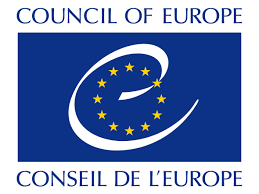 In order to meet the teaching and certification requirements, the level concept as defined was extended to cover specification of levels lying immediately below and above the threshold level. In the light of the developments in this field, particularly as regards the Common European Framework of Reference for Languages (CEFR), some of which emerged at around the same time as the latter, other levels were formulated for a number of languages, paying particular attention, for instance, to socio-cultural components or learner autonomy, by pinpointing a possible definition for the concept of “learning to learn”. A lower level (Waystage) was created for English, as was a level situated above the threshold, also starting with English (Vantage Level). Other language versions then followed. The three ascending level descriptions (Waystage, Threshold and Vantage) provided a basis for designing programmes and producing multimedia courses and were developed in parallel with the CEFR. These proficiency levels constitute one of the origins of the six-level scale of the CEFR.
In order to meet the teaching and certification requirements, the level concept as defined was extended to cover specification of levels lying immediately below and above the threshold level. In the light of the developments in this field, particularly as regards the Common European Framework of Reference for Languages (CEFR), some of which emerged at around the same time as the latter, other levels were formulated for a number of languages, paying particular attention, for instance, to socio-cultural components or learner autonomy, by pinpointing a possible definition for the concept of “learning to learn”. A lower level (Waystage) was created for English, as was a level situated above the threshold, also starting with English (Vantage Level). Other language versions then followed. The three ascending level descriptions (Waystage, Threshold and Vantage) provided a basis for designing programmes and producing multimedia courses and were developed in parallel with the CEFR. These proficiency levels constitute one of the origins of the six-level scale of the CEFR.
Learning target specifications (for the threshold and/or other levels) have been produced or updated for Basque, Catalan, Czech, Danish, Dutch, English, Estonian, French, Galician, German, Greek, Hungarian, Italian, Latvian, Lithuanian, Maltese, Norwegian, Portuguese, Romanian, Russian, Slovene, Spanish, and Welsh. More...
 A “Curriculum Framework for Romani” (CFR) has been developed to support the teaching of Romani. It was designed for practitioners as well as for manual designers and policy deciders. The CFR concerns age groups 4-16 and can be adapted to local contexts and needs. After a piloting phase a revised version was published in 2008.
A “Curriculum Framework for Romani” (CFR) has been developed to support the teaching of Romani. It was designed for practitioners as well as for manual designers and policy deciders. The CFR concerns age groups 4-16 and can be adapted to local contexts and needs. After a piloting phase a revised version was published in 2008.

/https%3A%2F%2Fprofilepics.canalblog.com%2Fprofilepics%2F1%2F0%2F1076071.jpg)